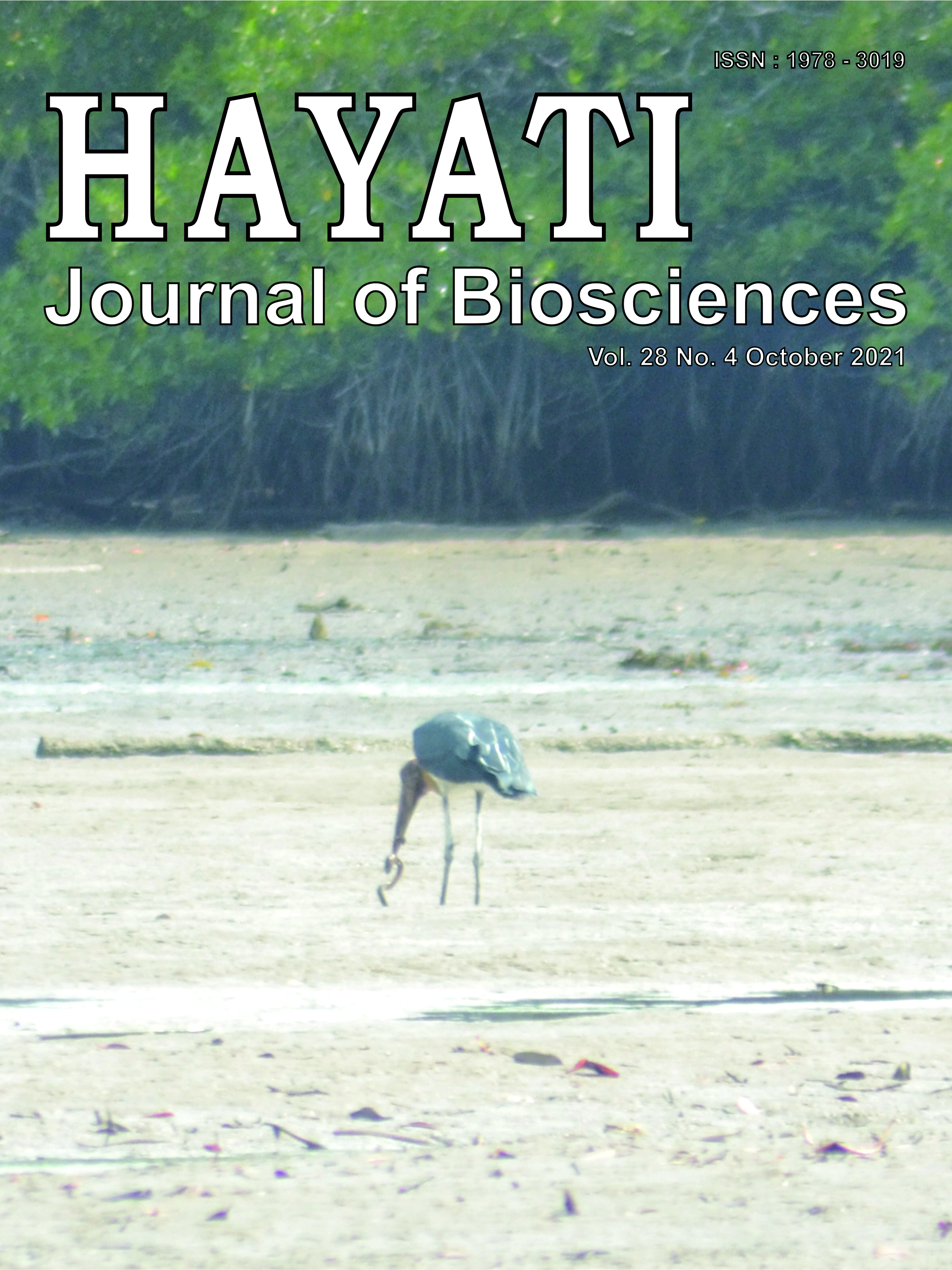Waterbird Foraging Habitat Selection in Balikpapan Bay: Water Depth and Patch Area as Important Factors
Abstract
Balikpapan Bay is one of the wetlands providing potential foraging habitat for waterbirds in Indonesia. Potential habitat loss due to oil industry expansion, recent waterbird occurrence, and co-occurrence of two closely related species with similar foraging characteristics led to habitat selection. Habitat selection could be affected by food as an intrinsic factor and extrinsic factor, for example, accessibility to the physical and biological components of the habitat. This study aimed to measure the foraging habitat selection, identify significant habitat quality parameters for the habitat selection and predict the foraging habitat selection model. We used one-zero sampling for collecting foraging habitat selection data, corer sampling for prey data, and collecting the abiotic environment, and Generalized Linear Modelling (GLM) to build the model. We identified four species as the migrant Little Egret (Egretta garzetta), Great Egret (Ardea alba), Purple Heron (Ardea purpurea), and Lesser Adjutant (Leptoptilos javanicus). All species, except Purple Heron, selected foraging habitats. A simple mathematic model of foraging habitat selection was significantly affected by two factors: water depth and patch area. A large patch area may provide primary prey abundance for waterbirds, while a low water depth level may give easy access to the prey.
Downloads
Copyright (c) 2021 Alexander Kurniawan Sariyanto Putera, Dyah Perwitasari-Farajallah, Yeni Aryati Mulyani, Stanislav Lhota, Riki Herliansyah, Sodikin Sodikin

This work is licensed under a Creative Commons Attribution-NonCommercial 4.0 International License.
HAYATI J Biosci is an open access journal and the article's license is CC-BY-NC. This license lets others distribute, remix, tweak, and build upon author's work, as long as they credit the original creation. Authors retain copyright and grant the journal/publisher non exclusive publishing rights with the work simultaneously licensed under a https://creativecommons.org/

























.png) IPB University
IPB University Department of Biology
Department of Biology The Indonesian Biological Society
The Indonesian Biological Society 

